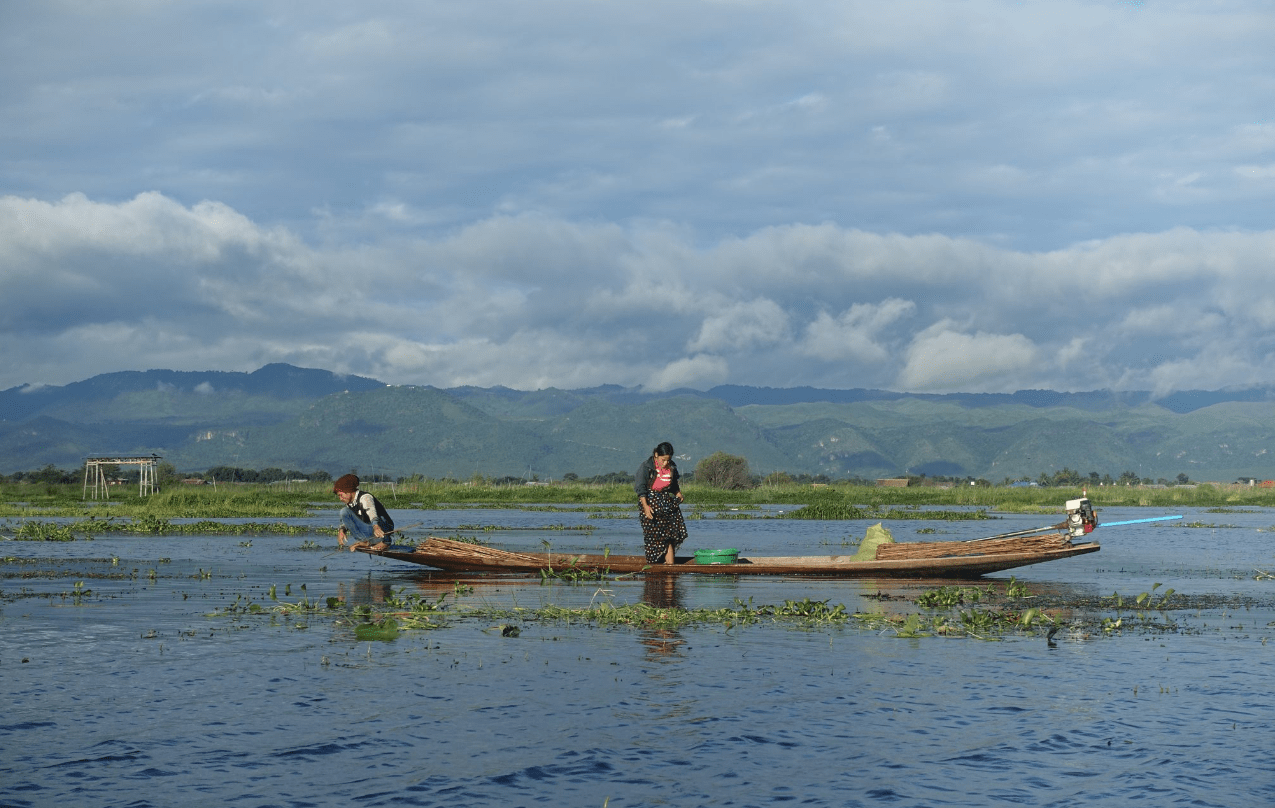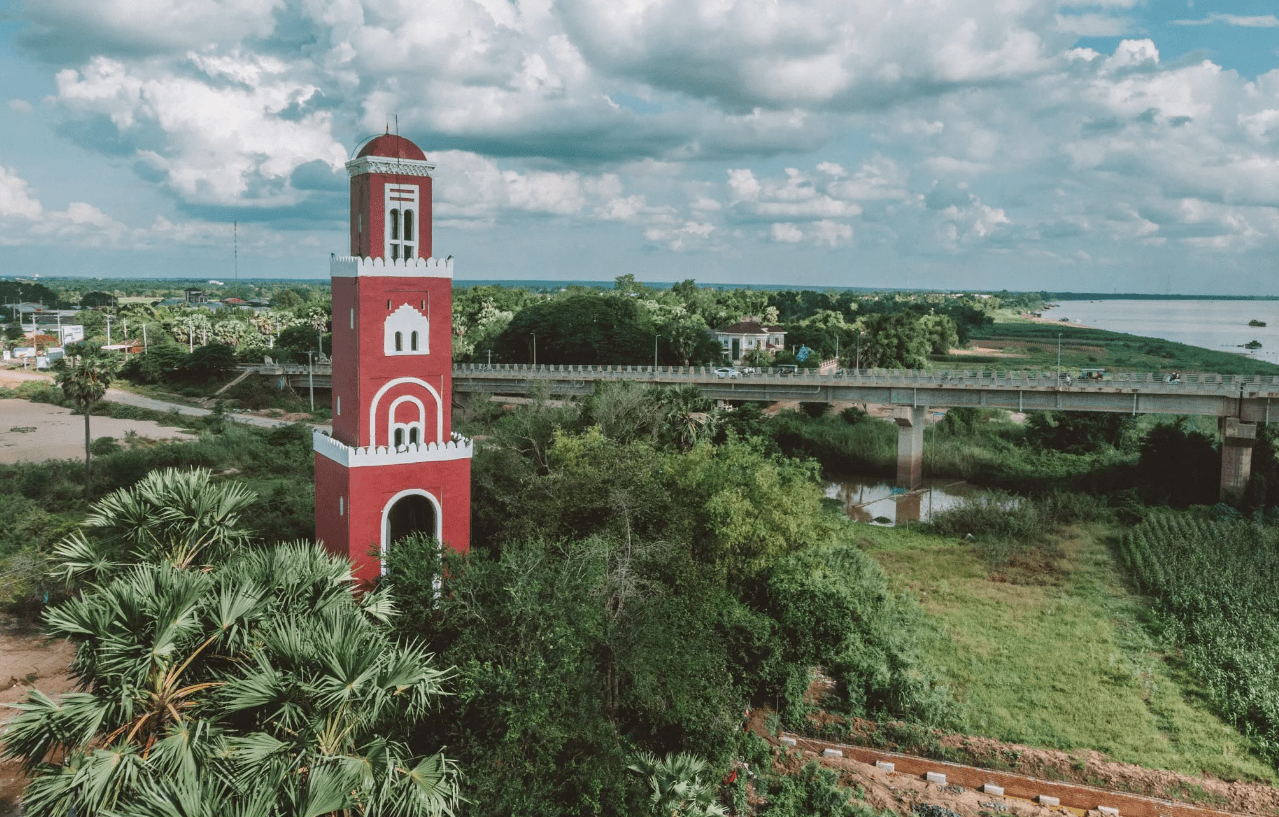Lotus Weaving at Inle Lake : A tangle of threads, an enigmatic pattern system, and a rudimentary piece of clunky machinery. Despite having a decent understanding of weaving, the workshop remains a place of endless fascination for me. It’s astonishing how a finished textile—so light, so intricately detailed, so perfectly crafted—can emerge from the fundamental mechanical process of interlacing two sets of threads.
The process seems deceptively simple, yet there’s an elusive quality to weaving that only the weaver truly comprehends. I hold a deep admiration for the artisans who create such wonders with their shuttles and heddles.
Another intriguing aspect is the striking similarities between weaving workshops I’ve visited over the years. Whether working with alpaca wool or eri silk, producing a delicate ikat scarf or a robust rya-knotted rug, the core elements of a productive studio are remarkably consistent, regardless of location.
At a traditional loom in a lotus weaving workshop on Inle Lake in Myanmar, I could easily spend hours exploring baskets filled with colorful bobbins, amidst a backdrop of tangled threads, and enjoying the familiar, soothing clink-clink of an upright loom. After visiting the lotus weavers of Inle Lake, I feel like I’ve uncovered another layer of detail in the world of weaving, raising new questions I hadn’t considered before.
Lotus Weaving on Inle Lake
Interestingly, hand weaving is a relatively recent tradition in In Paw Khon village on Inle Lake, dating back just over a century. However, the Burmese practice of crafting fabric from lotus fibers has a much longer history. Although once common across Buddhist countries in Southeast Asia, this tradition has largely diminished, making Inle Lake one of the few places where this ancient craft can still be witnessed.
The lotus fibers, extracted from the cut stems of the lotus plant, are fine, flexible, and remarkably soft. Initially, the technique of spinning thread from these fibers was developed to create special offerings for Buddhist monks in the form of lotus robes. Today, these fibers are primarily used to weave scarves and shawls—creating entire garments from lotus is impractical for several reasons, though bolts of fabric are occasionally ordered by Japanese clients.
Despite its impracticality, lotus thread holds significant religious and cultural importance in Myanmar. The lotus flower symbolizes the ability to rise above challenges and realize one’s potential, akin to how the lotus emerges from murky waters to reveal its radiant petals. The lotus is a prevalent symbol throughout Myanmar, and in Inle Lake, it plays a fascinating role in the region’s textile heritage.
The Lotus Fabric Workshop
Like many of Inle Lake’s attractions, the lotus weaving workshops are a well-trodden part of the tourist circuit. Similar to Mandalay, a specific route is recommended for visitors, often involving a boat ride where you can relax and enjoy the journey guided by your boatman. Situated in the lake’s eastern area, In Paw Khon village is a floating community with stilted houses linked by narrow canals.
Our visit began in the early hours, shortly after departing from Nyaung Shwe. As we navigated several bends and entered the village, I was struck by the number of weaving workshops present in In Paw Khon. Our guide selected the Hand Weaving Centre, a two-story studio within a weathered stilt house overlooking the lake’s serene waters.
The workshop is organized to provide a chronological tour of the weaving process—from raw plant material to finished fabric. Each group of visitors is assigned a guide who explains the process in detail before escorting them to the gift shop.
Step 1: Rolling the Thread
Throughout the workshop, you’ll find baskets filled with lotus stems in various shades of green and purple, each cut into manageable sections. Traditionally, these stems would be harvested from the surrounding waters, but due to increased demand, much of the raw material is now sourced from other parts of Myanmar.
At the entrance of the workshop, a woman sits on the floor at a low wooden table, breaking a piece of lotus stem in half. Skillfully, she separates the two pieces, revealing a delicate web of threads that appear as if by magic. She carefully stretches out the full length of the thread and arranges it neatly on the table.
Step 2: Spinning and Preparing the Threads
Once the threads are extracted from the stems, they are spun into finer, more uniform threads. This spinning process involves using traditional hand spindles, which helps to align and smooth the fibers. The prepared threads are then sorted and dyed according to the desired colors for the weaving project.
Step 3: Weaving the Fabric
With the threads ready, the weaving process begins. The loom is set up, and the threads are carefully arranged according to the desired pattern. This stage involves intricate manual work as the weaver passes the threads through the loom, creating the fabric with precision. Each pattern is crafted with attention to detail, showcasing the weaver’s skill and artistry.
Step 4: Finishing Touches
Once the weaving is complete, the fabric undergoes a finishing process. This includes trimming any excess threads, smoothing out the fabric, and sometimes adding additional embellishments. The finished fabric is then ready for use in making scarves, shawls, or other textile products.
Visiting the lotus weaving workshops on Inle Lake offers a unique glimpse into this traditional craft. The dedication of the artisans and the intricate process of creating lotus fabric make it a memorable experience for anyone interested in textiles and cultural traditions.



